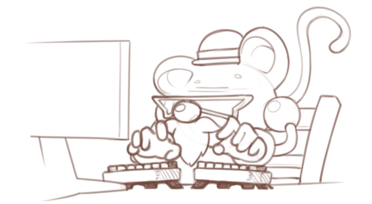Hacker News post about this: https://news.ycombinator.com/item?id=39309783 (source available)
I’ve written some magic templates that I assume are not easy to read by those who don’t know.
But this is seemingly unmaintainable… terrifying… and kind of neat.
This doesn’t actually read as serious TypeScript, moreso as someone trying to showcase unhinged code.
I’d be happy to be proven wrong with a link to the source code so that I can look the beast in the eye.
Take a look at some typescript libraries and frameworks and you will see stuff like this. Completely unreadable mess.
I have seen image recognition or text RPGs with type script types, but
const ok:true = true as Grid< 4, 9, 2Wtfnote that it continues onto the next line
For example?
Not OP, and these examples are not unreadable, but they are a few steps up from your typical generics.
https://effect-ts.github.io/effect/effect/Unify.ts.html#unify
Creating basic functionality for the language always leads to unreadable code.
The C++ version would be much, much worse, and the Lisp version is Lisp.
Agree. What I linked provides core type support for that library. The pipe one is just a bunch of overloads to support a specific way of handling function composition to appease the TypeScript type checker.
There are a lot of typing hacks in that library to simulate higher kinded types.
Right to jail. Right now.
Styled Components’ type system is one of the most impressive and most fucked up things I’ve ever had to dive into.
After 5 minutes of staring at it: Its typesystem sudoku. Each row and each col in the grid must add up to 15 (T<>), bit each number in the grid must be different (Df<>).
Grid will only be a type alias for the value true (google “Dependent types”) only if all Type Parameters (wich are values) hold up to the Sudoku conditions).
The file would not compile with “true as Grid” when grid type-aliases to false.
Fun to understand.
EDIT: too late
I like to think I can usually look at code in languages I don’t know and still get the gist of what it does but I am drawing a complete blank. Is this even slightly legible to anyone and if yes please explain
TL;DR:
Gridsimplifies to true, if and only if it is a 3x3 magic square.full explanation
Fifteenis an array of length 15Tchecks if an array of lengthA+B+Cis equivalent to an array of length 15, thus checking ifA+B+Cis equal to 15Andis simplifies toXifAis true, else it simplifies tofalseDfchecks ifAandBare Diffrent , simplifying toXif they areGridfirst checks if every row, column and diagonal is equal to 15, then checks if every item is unique.
Yea, i was really trying to understand… and then I was like yeah fuck this and regex too.
Gotta learn regex… C++ not so much 😹
Fear not, template abuse is not a necessary practice
Edit: wait what is this I thought it was c++ at first. Java? C#? Has an extends keyword
This is a Typescript type-level computation (which is Turing-complete AFAIK). However this kind of trickery is usually done for fun and to explore how much could be achieved just on the compile step.
Lol thanks that saves me a lot of googling 😹 that makes a lot of sense
Why tf
I think I can pinpoint the exact date things went sideways. It was a dark day on Monday, October 1, 2012.
I’m really trying to figure out what this is used for and why it was done this way.
I’m not having much success
Looks like something that checks that the rows in a grid att up to 15. Why? IDK, a game?
Yeah, and apparently type checking/inference is trivial, says the “CTO” of Xitter. /s
This seems like a generic type of problem that could happen to anyone. Hopefully we can learn from this and avoid appending it to our already large grid of problems.
I see what you did there
I don’t want to look at this anymore
My soul hurts
deleted by creator
If TypeScript didn’t have terrible type-level ergonomics, this wouldn’t look so bad—even if this toy example is largely just a brain exercise
That’s why macro_rules!
This is not rust :D Nothing will save typescript
Too much focus on compile time.








